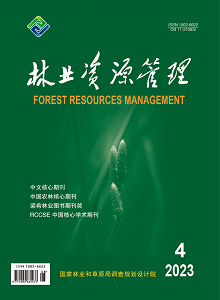Based on the statistic area data of land utilization and energy consumption from 2006 to 2016 in Guizhou Province,we analyzed the effects of land uses on carbon emission and carbon footprint in Guizhou province.The conclusion could be drawn as follows:(1) The information entropy and equilibrium degree of land use structure showed an increase trend,indicating that the land use structure of Guizhou Province is becoming more and more balanced,the heterogeneity is enhanced,and the land use system evolves to a relatively disorderly state.(2) The carbon emission gradually increased from 2006 to 2016,and construction land is the main carbon source,while woodland is the main carbon sink.(3) Carbon absorption gradually decreased from 2006 to 2016,and the total amount of carbon absorbed by forest land and grassland remains relatively stable.(4) Carbon emission intensity gradually decreased from 2006 (2.65 t/ten thousand yuan) to 2016 (1.23 t/ten thousand yuan),while less than GDP growth rate.(5) The area of forest and grassland increased from 2006 to 2016,and the ecological carrying capacity generally increased,but it is far from the increase speed of the total carbon footprint.The ecological deficit increased with the increase of the total carbon footprint year by year,indicating that Guizhou's own ecosystem is not enough to compensate for the carbon emissions of energy consumption.In terms of the carbon footprint of different energy consumption,the carbon footprint of coal energy is far larger than that of oil and gas,indicating that the energy consumption dominated by coal will bring a larger total carbon footprint.(6) There is a significant annual change in the carbon emissions,with the per capita carbon emissions increasing year by year,mainly due to the annual increase of net carbon emissions,and the carbon emissions of cultivated land,woodland,grassland and construction land all show an increasing trend,mainly for the carbon emissions of construction land.

